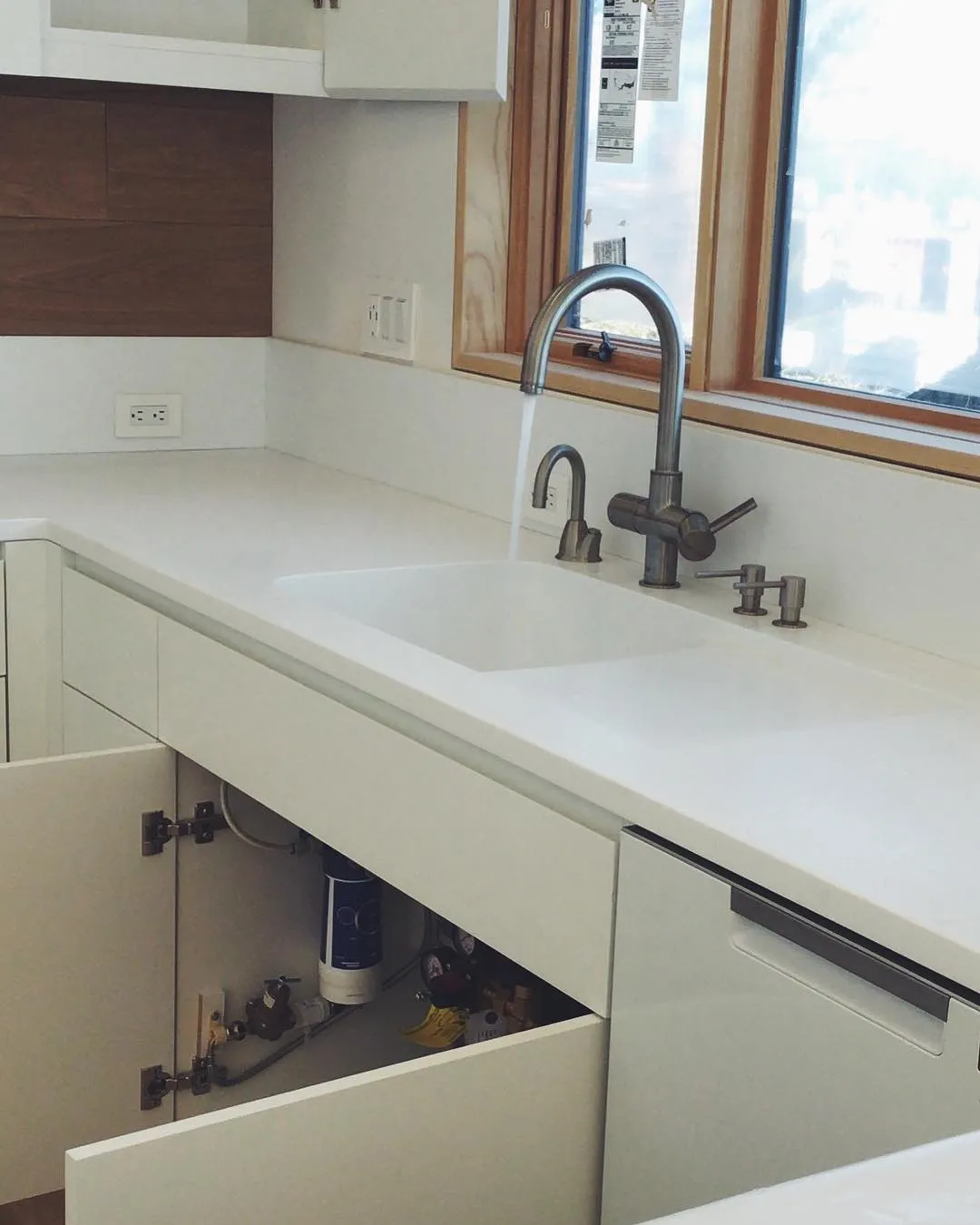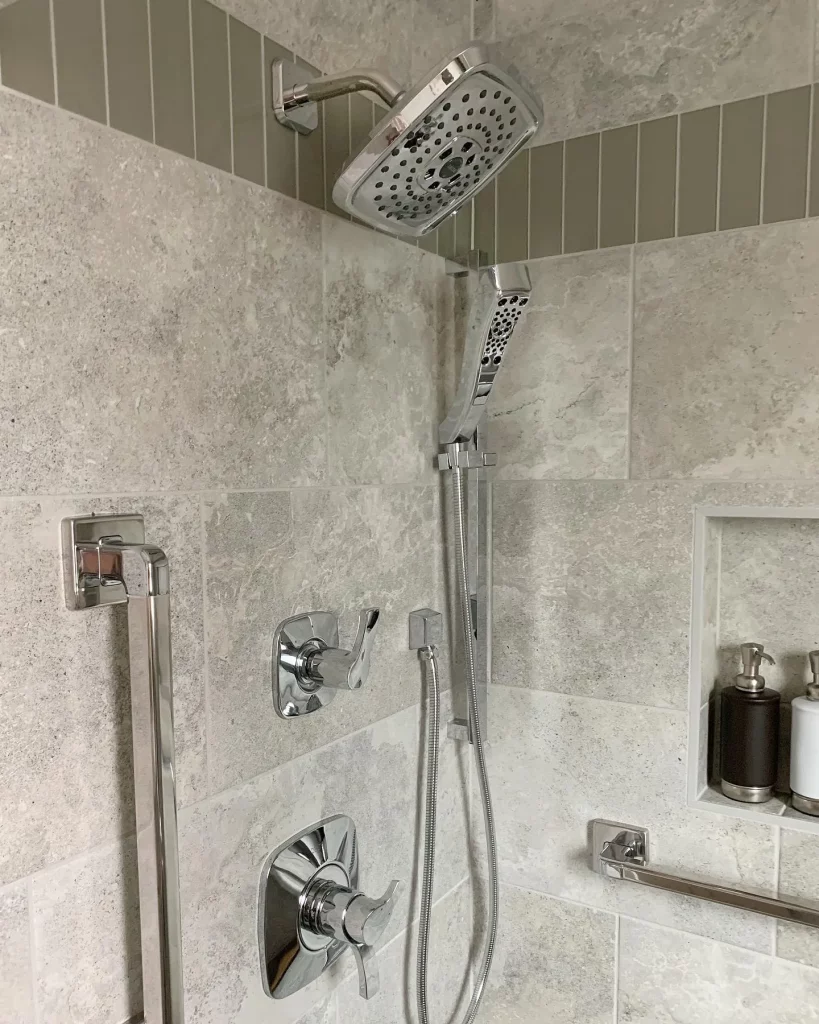
The most effective water-saving plumbing fixtures for any home are high-efficiency toilets, low-flow showerheads, and modern faucets equipped with aerators. Upgrading these three key items can drastically reduce a household’s water consumption and lower utility bills without any noticeable change in performance. High-efficiency toilets, especially dual-flush models, offer the most significant savings by using 1.28 gallons per flush or less, compared to older models that can use 3.5 gallons or more. Following toilets, water-efficient showerheads and faucet aerators contribute substantially by cutting water use during daily routines like bathing and handwashing.
This article provides a detailed look at the best water-saving technologies available today. With years of experience installing and servicing plumbing systems, Simpson Plumbing has seen firsthand the impact these fixtures have on a home’s efficiency. The information here is based on that practical knowledge to help you make informed decisions for your property.
Toilets are the main source of water use inside the home, accounting for nearly 30 percent of an average home’s indoor water consumption, as noted by the U.S. Environmental Protection Agency. Older, inefficient toilets use a massive amount of water. If your home was built before the 1990s, you might have a toilet that uses 3.5 to 7 gallons with every flush.
Modern high-efficiency toilets (HETs) use a maximum of 1.28 gallons per flush (GPF), a standard required for the EPA’s WaterSense label. Making the switch can reduce toilet water use by 20 to 60 percent. This means an average family could save nearly 13,000 gallons of water annually.
When choosing an HET, you have two main options: single-flush and dual-flush. A single-flush model uses the same low volume of water (1.28 GPF or less) for every flush. A dual-flush model offers two options: a full flush for solid waste and a reduced flush for liquid waste, often using as little as 0.8 GPF. This provides even greater control over water usage.
| Feature | Single-Flush HET | Dual-Flush HET | Standard Old Toilet |
|---|---|---|---|
| Gallons per Flush | ~1.28 GPF | ~0.8 GPF (liquid) / ~1.6 GPF (solid) | 3.5 – 7.0 GPF |
| Control | One flush option | Two flush options | One flush option |
| WaterSense Certified | Yes (if 1.28 GPF or less) | Yes | No |
Bonus Tip: Check your current toilet for silent leaks, a common source of water waste. Add a few drops of food coloring to the tank and wait 15 minutes without flushing. If color appears in the bowl, the toilet has a leak that needs repair, often just a simple flapper replacement.
After toilets, showers are typically the next largest water users in a home. Standard showerheads use 2.5 gallons of water per minute (GPM). A WaterSense-labeled showerhead uses no more than 2.0 GPM, saving a family a significant amount of water each year. The change can save the average family about 2,700 gallons of water per year, according to data from the U.S. Environmental Protection Agency. This also saves the energy needed to heat that water, reducing electricity or gas bills.
For bathroom and kitchen sinks, the easiest and most affordable upgrade is a faucet aerator. This small, circular screen screws onto the tip of the faucet and works by mixing air into the water stream. This maintains a steady, full-feeling pressure while reducing water volume. Standard faucets run at 2.2 GPM, but installing a WaterSense-labeled aerator can reduce the flow to 1.5 GPM or less. It’s a simple, inexpensive change that makes a big difference over time.

While not a fixture in the traditional sense, a whole-home leak detector is a powerful tool for water conservation. These devices monitor the flow of water into your house and can identify abnormal patterns that signal a leak. Some advanced systems can even shut off the water main automatically to prevent catastrophic damage and waste. According to the Insurance Information Institute, water damage is one of the most common and costly insurance claims. A small, undetected leak can waste thousands of gallons over time, so these systems protect both your wallet and water resources.
Before you purchase new fixtures, it’s important to evaluate a few factors to ensure you get the best performance and savings for your home.
Older homes may have plumbing systems that are not perfectly compatible with some of the newest ultra-high-efficiency fixtures. It’s wise to understand your home’s water pressure. While most modern fixtures are engineered to work well in a variety of settings, a professional can help determine if any adjustments are needed for optimal performance.
Concerns about low-flow fixtures providing a weak stream are mostly a thing of the past. Modern engineering ensures that these fixtures deliver a satisfying experience. However, if your home already has very low water pressure, certain models may perform better than others. Reading reviews and looking for products designed to boost pressure can help.
Water-saving fixtures can sometimes cost more upfront than their standard counterparts. But it’s helpful to think of them as an investment. The monthly savings on your water bill will eventually pay for the fixture, and the long-term savings can be substantial. Look for the WaterSense label, as these products are certified by a third party to meet efficiency and performance standards.
Many local water utilities offer rebates or credits for purchasing and installing WaterSense-labeled products. Before buying, check your utility provider’s website or give them a call. These programs can significantly reduce the initial cost of upgrading your fixtures, making the decision even easier.
Upgrading to water-saving plumbing fixtures is one of the most practical ways to reduce your home’s environmental footprint and lower your monthly expenses. By starting with high-efficiency toilets, low-flow showerheads, and faucet aerators, you can achieve significant savings. Before making a purchase, assess your home’s specific needs, check for local rebates, and choose products with the WaterSense label to guarantee performance and efficiency.
Choosing and installing the right plumbing fixtures can feel complicated. For professional advice tailored to your home’s unique plumbing system, the team at Simpson Plumbing is here to help. A proper installation ensures you get the maximum water and cost savings from your new fixtures. Contact the office at (360) 954-2041 to discuss your options.
The primary consideration is the initial cost, which can be higher than standard fixtures. Also, in homes with very low water pressure, some ultra-low-flow models might not provide the desired performance, but there are models designed specifically for these situations.
The WaterSense label is a certification from the U.S. Environmental Protection Agency. It ensures that a product is at least 20% more water-efficient than average products in that category and that it performs as well or better. It’s an easy way to identify fixtures that will deliver real savings and quality.
Many fixtures, like showerheads and faucet aerators, are simple to install for someone with basic DIY skills. Toilet installation is more involved and may require a professional to ensure it is done correctly without leaks.